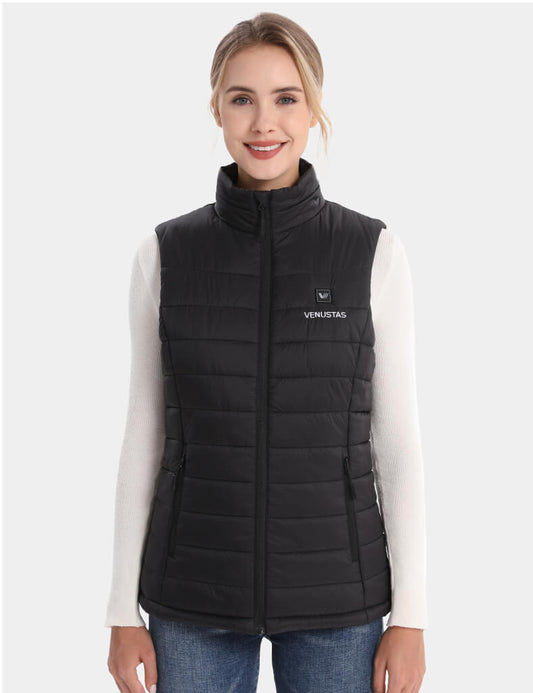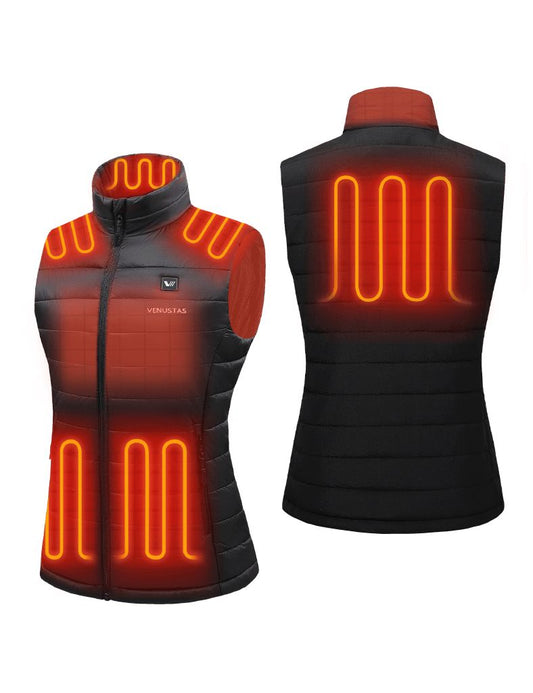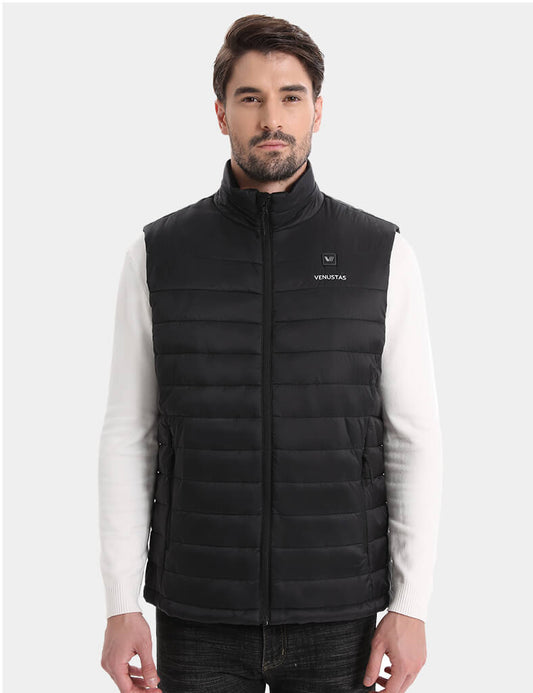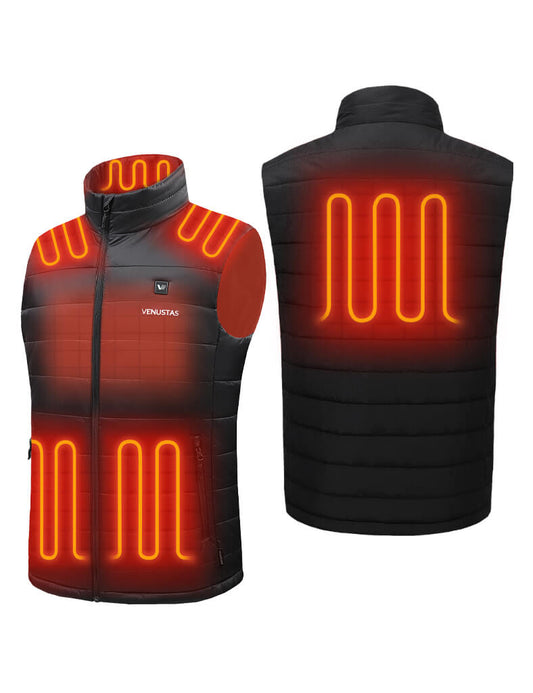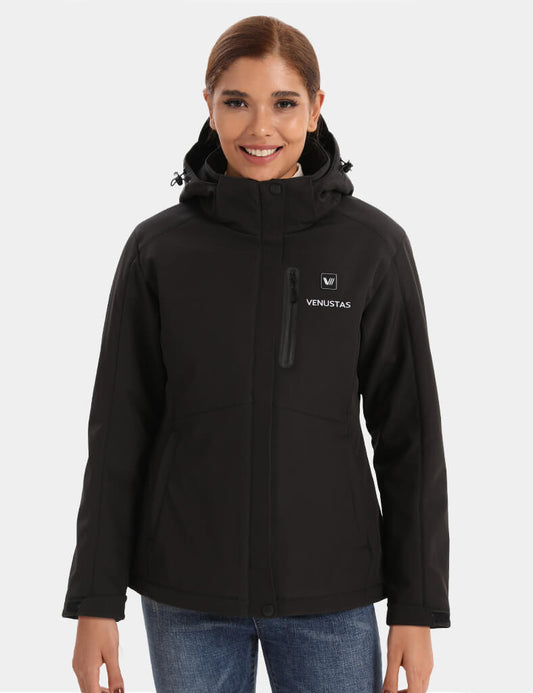What Happens When a Heated Jacket Gets Wet? The Truth Revealed
Heated jackets have surged in popularity in recent years, prized for their ability to deliver warmth and comfort in cold conditions. But what happens if a heated jacket gets wet? Could moisture damage the heating elements? In this article, we’ll explore how water affects heated jackets and share tips on handling the situation.
Are Venustas Heated Jackets Waterproof or Water-Resistant?
For outdoor enthusiasts, heated jackets are more than a luxury—they’re a cold-weather essential. But before heading out in unpredictable weather, one question often comes up: Are they waterproof or just water-resistant?
First, let’s clear up the difference between the two terms, as they’re often confused.

Waterproof means a garment can prevent water from penetrating entirely, even during heavy rain or full submersion. A truly waterproof jacket can withstand significant exposure without letting water through.
Water-resistant means the material can repel water to a degree—enough to handle light rain or snow—but will eventually allow moisture in if exposed for too long or during heavy downpours.
Now, how does the Venustas heated jacket perform?
Venustas achieves its water-resistant properties through premium materials and advanced manufacturing techniques. The outer shell is coated with a durable water-repellent finish, causing water to bead and roll off the surface. Sealed seams further protect against moisture seeping through stitching, ensuring the jacket retains its insulation even in light rain or snow.

However, it’s important to note that the Venustas heated jacket is not fully waterproof. It’s not built for heavy rain or full submersion. For those conditions, layering a waterproof shell over the jacket is the best way to protect both you and the heating system during extreme weather.
What Happens If Your Heated Jacket Gets Wet?
Heated jackets have transformed the way we stay warm in cold weather, offering both comfort and convenience. However, it’s important to understand the potential consequences of exposing them to moisture. Below, we’ll explore how different levels of wetness can affect your jacket and share practical tips for handling each situation.
Heated Jacket: Degrees of Wetness
1. Light Moisture
Exposure to drizzle, mist, or a few snowflakes generally isn’t a cause for concern. Most heated jackets are made from water-resistant materials designed to repel small amounts of moisture, allowing you to keep wearing them safely in mild conditions.

2. Moderate Wetness
A steady rain shower or an accidental spill can pose more of a risk, even for water-resistant jackets. If this happens, act quickly:
-
Disconnect the battery immediately to prevent electrical damage.
-
Remove the jacket and gently blot away moisture with a clean cloth.
-
Hang it in a well-ventilated area until it’s completely dry before using it again.
3. Heavy Wetness
Heavy rain, full saturation, or submersion in water can seriously affect your jacket’s performance and safety. In these cases:
-
Disconnect the battery right away to avoid hazards.
-
Shake off excess water and hang the jacket to dry in a well-aired space.
-
To speed up drying, place it near a fan or in a room with good airflow.
Caring for the Battery
The battery is the heart of your heated jacket, and it needs extra care if it gets wet:
-
Always disconnect it immediately to prevent short-circuiting or damage.
-
If only the surface is damp, wipe it gently with a dry cloth and allow it to air dry fully before charging or reconnecting it.
-
If the battery has been fully submerged, it’s safest to replace it with a new one.
Tips to Keep Heated Jackets Dry
To keep your heated jacket comfortable, functional, and long-lasting, proper care is key. Below are some essential tips to help protect your jacket from moisture damage.

1. Follow Proper Maintenance: Regular upkeep is essential. Always refer to and follow the manufacturer’s cleaning and maintenance guidelines to preserve both the fabric and the heating elements.
2. Remove the Battery: Before storing your jacket, take out the battery or any power source. This simple precaution helps prevent potential battery leakage or damage to the electrical components.
3. Air Dry Only: The safest way to dry a heated jacket is to let it air dry naturally. Lay it flat on a clean, dry towel or hang it on a hanger in a well-ventilated space. Avoid direct heat sources, which can damage the fabric and wiring.
4. Store in Proper Conditions: Keep your jacket in a cool, dry place, away from direct sunlight, humidity, or extreme temperatures. Make sure the area is free from chemicals or substances that could harm the fabric or electrical parts.
5. Fold and Pack with Care: To prevent creases, fold your jacket neatly. Store it in a breathable storage bag to protect it from dust and moisture. Avoid plastic bags, as they can trap humidity and lead to mildew or odors.
Conclusion
While heated jackets are typically water-resistant, they aren’t fully waterproof. Light moisture is unlikely to cause issues, but heavy rain or full saturation can damage the heating system. By taking preventive measures and ensuring proper drying, you can extend your jacket’s lifespan and keep it performing at its best.
